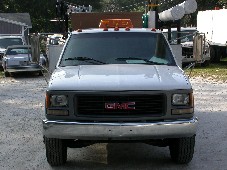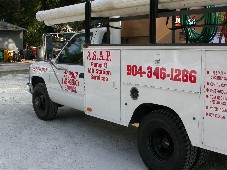Agribusiness and Irrigation Systems by ASAP irrigation and pump repairs 904-346-1266
Jacksonville Duval County 904-346-1266
St Augustine St Johns County 904-824-7144
Orange Park Clay County 904-264-6444
Jacksonville Beaches Duval County 904-246-3969
Fernandina Nassau County 904-277-3040
Macclenny Baker County 904-259-5091
Palm Coast Flagler County 386-439-5290
Daytona Volusia County 386-253-4911
Serving all of Florida and Georgia at 904-346-1266
EMAIL LARRY@1STPROP.COM (feel free to email your bidding packages here)
Agribusiness
Agribusiness map
Map showing location of U.S. facilities in this sector; please click on the map to see a larger version.
* Sector Profile
* Performance Data and Trends for this Sector
* Resources
Sector Profile
The Agribusiness sector includes those business entities that most significantly affect how food is grown, processed, and distributed in the United States. Agribusiness stakeholders have a major influence on the environmental practices of all segments of the food industry, from production to consumption.
The food-processing industry is one of the largest segments of the Agribusiness sector. These companies convert raw fruits, vegetables, grains, meats, and dairy products into finished goods. Processing facilities address on-site environmental issues but also interact with farmers, livestock growers, distributors, and consumers in ways that can beneficially affect off-site environmental decisions. Although the food-processing industry includes many large agribusiness corporations, there are more than 20,000 processing establishments widely distributed throughout the country and two-thirds of all food-processing companies have fewer than 20 employees.
Top of page
Performance Data and Trends for this Sector
You can find data and trends for aspects of this sector in the Food & Beverage Manufacturing chapter of the most recent Sector Performance Report.
The Food Manufacturing chapter, Energy Trends in Selected Manufacturing Sectors: Opportunities and Challenges for Environmentally Preferable Energy Outcomes (PDF) (10 pp, 288K, About PDF), outlines the trends and opportunities in energy use for this sector.
The Food and Beverages chapter in the report, Quantifying Greenhouse Gas Emissions from Key Industrial Sectors in the United States (PDF) (132 pp, 1.44MB, About PDF), provides a GHG emissions profile for this sector.
Top of page
A Watershed Perspective on Water Quality Impairments
Download this document (PDF) (148 pp, 16.48MB, About PDF)
This document is intended to inform food processors, non-profit organizations, and state/local governments within six specific watersheds about the contribution that agricultural supply chains may make to current water quality impairments. The watersheds covered include (1) the Chesapeake Bay Watershed in Regions 2 and 3, (2) the Neuse River Watershed in Region 4, (3) the Wisconsin and Minnesota River Watersheds in Region 5, (4) the Illinois River Watershed in Region 6, (5) the Elkhorn River Watershed in Region 7, and (6) the Tulare-Buena Vista Lakes Watershed in Region 9. For each watershed, the document covers major agricultural uses, food processors, wastewater treatment facilities, major impairments and concerns within the watersheds, water quality monitoring activities, and relevant initiatives in the watershed.
The Western Iowa Livestock External Stewardship Pilot Project
Download this document (PDF) (56 pp, 2.9MB, About PDF)
This document was a product of a working relationship with the meat-processing segment of the agribusiness sector. As part of the program, stakeholders outlined a project to test whether the livestock industry—working together with state and federal agencies and producers—could design, implement and measure voluntary environmental stewardship towards nutrient management. Published in October 2004, the document highlights this initiative that emphasizes consultation, cooperation, and communication among meat processors, livestock producers, and government officials. Farmland Foods, Prestage-Stoecker Farms, and independent livestock producers led the project with support from Iowa NRCS, Iowa DNR and Iowa State University. Significant contributions from all involved contributed to the success of this collaboration.
Environmental Management Systems (EMS)
In summer 2003, Sector Strategies released an EMS Implementation Guide for the Meat Processing Industry to encourage development and use of EMS. The Guide was the result of a pilot project undertaken as part of EPA’s Sector Strategies Program with the meat-processing industry. Activities include issue analysis, problem solving, EMS tool development, and guidelines on convening dialogue. Sector Strategies partnered with the Iowa Waste Reduction Center (IWRC) and the Iowa Department of Natural Resources (IDNR) to pilot test the EMS Implementation Guide with five companies: Advanced Brands, Excel, Farmland, Humboldt Sausage, and West Liberty Foods. IWRC and IDNR provided technical assistance to the five companies in the form of workshops, site visits, and teleconferences. Sector Strategies conducted an evaluation of the project and finalized the Guide to reflect lessons learned from the pilot.
In October 2003, Sector Strategies released a business case brochure highlighting the benefits of EMS implementation at meat processing facilities. Environmental Management Systems: Systematically Improving your Performance was created with help from Iowa Department of Natural Resources, Iowa Waste Reduction Center.
Top of page
Resources
Sector-related Links
* The National Agriculture Compliance Assistance Center (Ag Center)
* AgSTAR
* Pesticide Environmental Stewardship Program
* EPA Industry Sector Notebooks:
o Profile of the Agricultural Crop Production Industry (2000) (PDF) (184 pp, 2.8MB, About PDF)
o Profile of the Agricultural Livestock Production Industry (2000) (PDF) (166 pp, 2.7MB, About PDF)
* ENERGY STAR Focus on Energy Efficiency in Food ProcessingExit EPA Disclaimer
* ENERGY STAR Focus on Energy Efficiency in Corn RefiningExit EPA Disclaimer
* A Business Guide to U.S. EPA Climate Partnership Programs (PDF) (52 pp, 1.3MB, About PDF)
* Regulatory Information for the Food Processing Sector
* Water Recycling and Reuse
* Climate Change Health and Environmental Effects–Agriculture and Food Supply
Top of page
Air
Air, Ag Burning, Air Emissions from Animal Feeding Operations, More…
Business Assistance
Compliance & Enforcement, E-Commerce, Environmental Justice, More…
Health and Safety
Biosecurity, Emergency Planning and Response, Food Safety, More…
Pesticides
Antimicrobial Pesticides, Biopesticides,E-Commerce, More…
Site and Equipment Management
Biosecurity, Environmental Management Systems, Fuels and Engines, More…
Sustainability
Biopesticides, Composting, Integrated Pest Management, Organic Farming, Partnerships, Pollution Prevention, Best Management Practices, and Conservation, More…
Water
Drinking Water and Wells, Surface and Groundwater
Laws & Regulations
Laws, Policies
Resources
Contacts, Calendars, Software and Data, More…
National Agriculture Center (Ag Center)
About the Ag Center, Newsroom, Publications, List service, Toll-free Number





